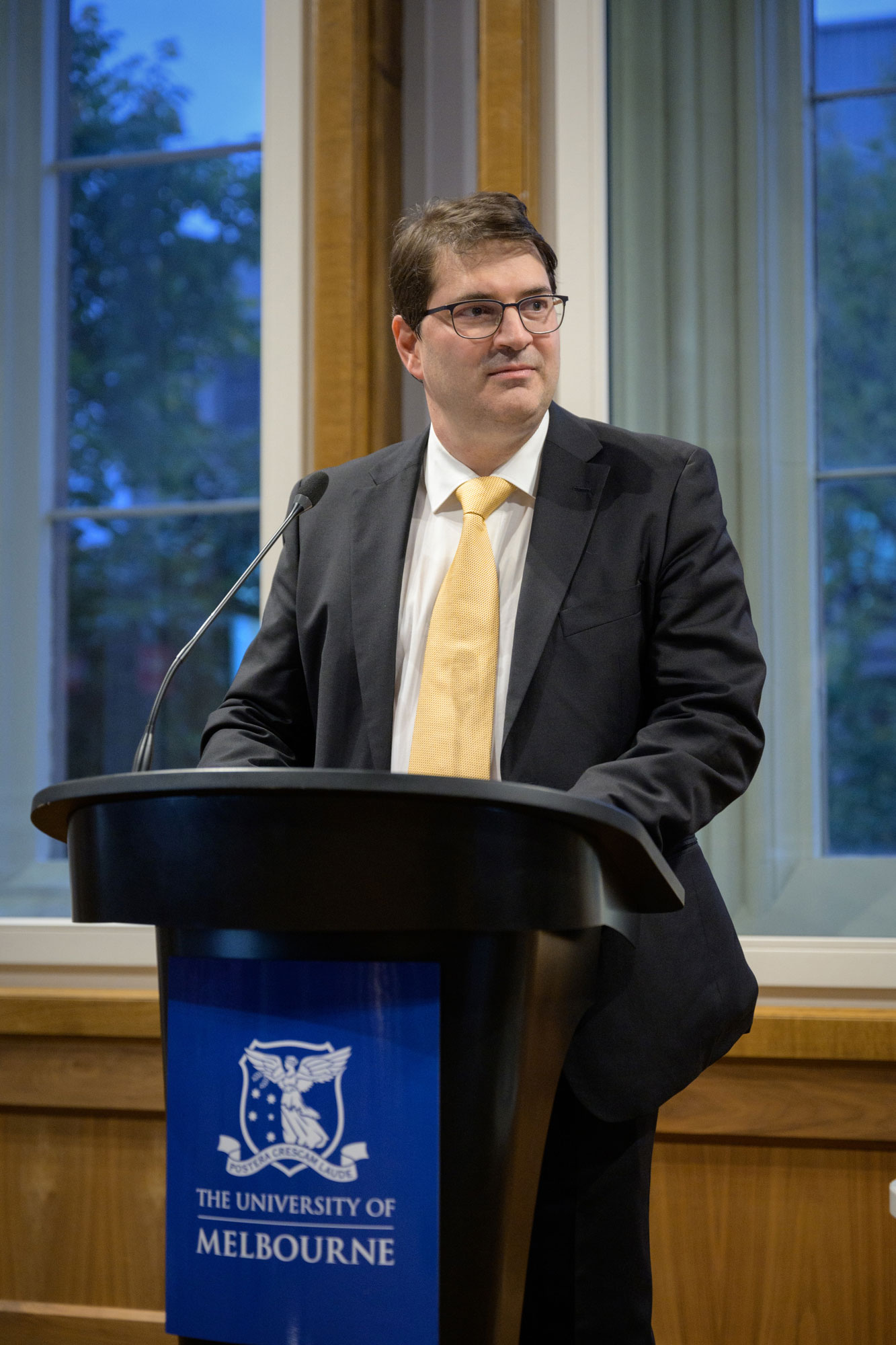For almost 30 years, a world-leading gait analysis laboratory at The Royal Children’s Hospital in Melbourne has helped children with cerebral palsy receive life-changing treatments.
When Professor Kerr Graham arrived in Australia to introduce gait analysis technology to help manage children with cerebral palsy, some medical professionals were sceptical. An accomplished orthopaedic surgeon who had trained in Ireland, London and Toronto, Professor Graham had witnessed firsthand the dramatic potential of gait analysis to improve the lives of children with cerebral palsy.
However, in Australia, gait analysis was only being used by the Australian Institute of Sport in Canberra to help athletes perfect their performance. Professor Graham knew the technology had much to offer the approximate 2 in 1,000 Australian children born with cerebral palsy every year. He had seen it work and so, ignoring the sceptics, and with support from the Hugh Williamson Foundation and the Orthopaedic Department, he established Australia’s first clinical gait analysis laboratory at The Royal Children’s Hospital in Melbourne.
Almost 30 years later, Professor Graham has retired but the Hugh Williamson Gait Analysis Laboratory continues to have worldwide impact on the assessment, treatment and management of children with cerebral palsy.
The sceptics have also been silenced after seeing the precision with which gait analysis can help pinpoint the specific muscles, tendons, bones and joints where surgical intervention will be most effective to relieve some of the debilitating effects of cerebral palsy. The level of complex detail provided by gait analysis, in combination with clinical assessment, helps produce a blueprint for surgeons who can then operate with better outcomes for their young patients.
“Gait analysis has been a game changer in the treatment of cerebral palsy – it has given us understanding of this disease at a level that was previously unimaginable,” says Professor Graham.
“It allows us to make a diagnosis and prognosis, to select the best treatment and to then follow up and ensure the treatment has worked. It has brought improvements in treatments and in the quality of life of children with cerebral palsy that were never before possible.”
Highlighting the power of gait analysis, Professor Graham relates the case of a boy with cerebral palsy who migrated to Australia. Surgery in his homeland had worsened his condition and he arrived at RCH with a severely crouched gait, dependent on crutches, and unable to stand or walk upright unaided.
“He’d had traditional surgery without the benefit of gait analysis and that caused him severe harm. We did gait analysis and he then had targeted multi-level surgery, mostly in his hips and knees. He went from almost being unable to walk to walking upright and independently,” says Professor Graham.
Pam Thomason, Senior Physiotherapist, worked with Professor Graham and also recalls the life-changing impact of gait analysis and surgery for that young person.
“We followed his progress over the next 15 years and he never needed further surgery. He was able to walk like you or I,” says Ms Thomason.
“He wanted to be a doctor, but he never imagined himself being able to do that. After surgery and rehabilitation, he completed high school, went to university and studied medicine. He’s now a GP and he’s married and has a little girl.”

The world-leading research and treatments offered at the Hugh Williamson Gait Analysis Laboratory are now being led by Associate Professor Erich Rutz, inaugural Bob Dickens Chair in Paediatric Orthopaedic Surgery at the University of Melbourne and Clinical Director of the gait laboratory at RCH.
The Bob Dickens Chair is funded by the Pamela Galli and Bob Dickens Paediatric Orthopaedic Research Trust and honours the work of Dr Dickens who was Director of Orthopaedics at RCH from 1990 to 1998.
Associate Professor Rutz trained in Switzerland but was drawn to Melbourne because of the gait lab’s reputation for cutting-edge research, global collaboration and for the beneficial results of its programs for children living with cerebral palsy. The lab has also developed the Gait Profile Score used worldwide to help non-specialists make sense of complicated analytic gait data and the Functional Mobility Scale that is also used internationally when assessing mobility in children with cerebral palsy.
Associate Professor Rutz developed an innovative surgical technique that helps children with cerebral palsy to be able to lift their foot and place it down more smoothly, improving the ability to walk and run. Associate Professor Rutz has introduced the surgery to Australia through the gait lab and continues to refine the procedure.
As the Bob Dickens Chair, he is furthering his research interests and is keen to focus on gaining a deeper understanding of muscle function using 3D ultrasound.
“That will allow us to easily assess muscle volume, how muscle is orientated, and the effects of lengthening or shortening muscles on the structure and this better understanding will improve the outcomes for children,” he says.
Greater data sharing between the growing number of gait labs in Australia to improve options and outcomes for children and greater understanding of the outcomes that matter to children and their families are also future research areas.
“No cure is on the horizon but we want to help children have the best quality of life and best level of functioning without pain so they can be independent young adults,” says Associate Professor Rutz.
Ms Thomason says while there is no cure, there is greater hope for children diagnosed with cerebral palsy.
“For parents, from the day their child is diagnosed they have questions – will their child be able to sit down, will they walk, will they be in a wheelchair, will they be able to go to school and will they be able to have children themselves one day?” she says.
“Now we can give families greater certainty. We have almost 30 years of good data and we can learn from that to continue to improve things for the next generation. More therapies will be developed to make life easier. The future is bright.”